Posts by John Dudovskiy
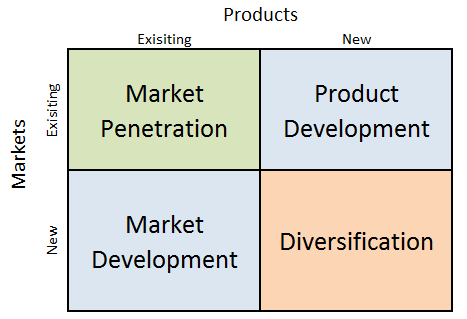
BYD Ansoff Matrix is a marketing planning model that helps the electric automaker to determine its product and market strategy. Ansoff Matrix illustrates four different strategy options available for businesses. These are market penetration, product development, market development and diversification. Ansoff Growth Matrix Within the scope of Ansoff Matrix, BYD uses all four growth strategies in an integrated manner: 1. Market penetration. Market penetration refers to selling existing products to existing markets and BYD uses this strategy extensively. The company offers EVs at competitive price points, particularly catering to budget-conscious consumers. This attracts new customers and makes EVs more accessible in price-sensitive markets like China. Moreover, the EV giant offers special discounts and promotional packages for specific customer segments, such as first-time buyers, government fleets, or ride-sharing companies. Such moves incentivize purchase and boost sales within defined target groups. 2. Product development. This involves developing new products to sell to existing markets. Product development sits at the heart of BYD’s long-term success, not just as a growth strategy but as a core pillar of their competitive advantage. The company consistently expands its EV portfolio developing new models across various segments (cars, buses, trucks) alongside enhancing existing models with improved range, performance, and features. Furthermore, BYD invests heavily in R&D for autonomous driving, battery improvements, intelligent connected vehicles, and alternative energy solutions like hydrogen fuel cells. 3. Market development. Market development strategy is associated with finding new markets for existing products and it is also a key growth strategy for BYD. Starting to produce EVs in 2003, BYD today sells EVs to more than 400 cities in over 70 countries and regions across the six continents of the world.[1] The company is expected to further intensify its focus on international market development strategy. 4. Diversification. Diversification involves developing new products to…
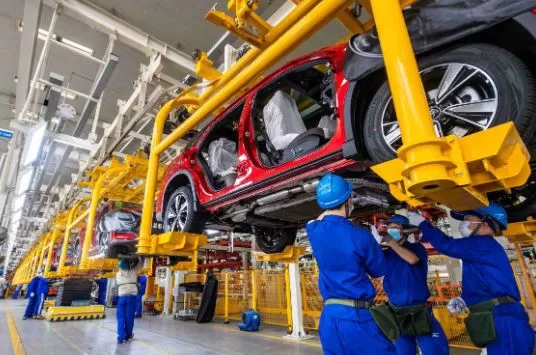
BYD organizational culture integrates the following three key elements: 1. Meritocracy. BYD promotes a culture of meritocracy, where performance and results are rewarded. BYD’s culture strongly emphasizes performance and achieving concrete results. Promotions, bonuses, and other rewards are heavily tied to individual contributions and exceeding targets. Such an approach incentivizes employees to constantly strive for excellence, pushing themselves and the company forward. 2. Cost-cutting. Reducing expenses whenever possible is a crucial element of EV maker’s organizational culture, woven into its fabric and contributing significantly to its success. BYD famously controls almost every aspect of its production, from battery cells to vehicle assembly. This reduces reliance on external suppliers and cuts down on costs significantly. For instance, they manufacture their own semiconductors, a major expense for EV production. The company encourages a culture of resourcefulness and frugality among its employees. They’re empowered to find creative solutions to save costs, from reusing materials to optimizing energy consumption. For example, employees developed a system to recycle scrap metal from the production process, saving millions of dollars annually. 3. Value-driven culture. The EV giant promotes the values of excellence, pragmatism, passion and innovation. These values go beyond mere slogans and posters, influencing every aspect of the company’s operations and employee behaviour. BYD empowers employees at all levels to take ownership and make decisions aligned with the core values. A strong community spirit is present at the company fostering a sense of belonging and collaboration, where employees feel valued and invested in the company’s success. BYD Company Limited Report contains the above analysis of BYD organizational culture. The report illustrates the application of the major analytical strategic frameworks in business studies such as SWOT, PESTEL, Porter’s Five Forces, Value Chain analysis, Ansoff Matrix and McKinsey 7S Model on BYD. Moreover, the report contains analyses of BYD leadership, organizational structure and business strategy. The report also…
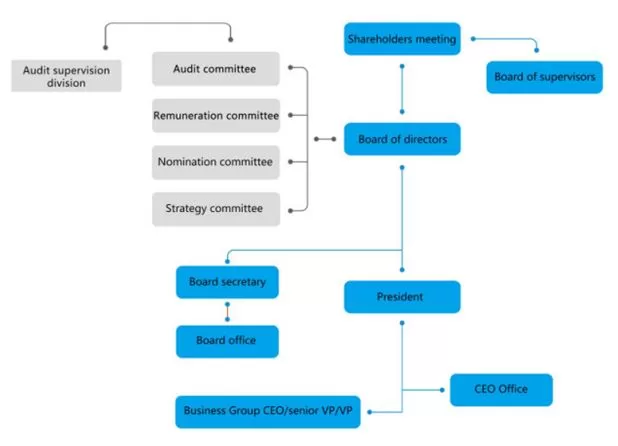
BYD organizational structure has the following characteristics: – Matrix Structure. BYD corporate structure is matrix, combining functional departments (e.g., R&D, Sales) with product-based divisions (e.g., Dynasty, Ocean, Commercial Vehicles). This fosters collaboration and flexibility while maintaining focus on specific product lines. The matrix structure enables quick decision-making and adjustments to market dynamics – Independent Brands. Recent moves towards independent operations for brands like Dynasty and Ocean indicate a strategy to cater to distinct market segments with tailored brand identities and marketing efforts. In other words, independent brands allow for targeted approaches. – Emphasis in R&D. BYD prioritizes internal R&D, with dedicated institutes for each brand and separate units for core technologies like DM-i hybrids and intelligent driving. This fosters innovation and control over key components. – Vertical Integration. The EV behemoth vertically integrates key aspects of its supply chain, including battery production and some vehicle components. Such an approach enhances cost control and quality assurance. Vertical integration expands BYD organizational structure. – Regional Variations. The electric automaker’s structure adjusts to regional needs, with separate sales divisions and local leadership teams managing specific markets. Regular variations approach ensures responsiveness to diverse customer preferences and regulations. The Figure below illustrates BYD corporate structure at the senior level. BYD Company Limited Organizational Chart BYD Company Limited Report contains the above analysis of BYD organizational structure. The report illustrates the application of the major analytical strategic frameworks in business studies such as SWOT, PESTEL, Porter’s Five Forces, Value Chain analysis, Ansoff Matrix and McKinsey 7S Model on BYD. Moreover, the report contains analyses of BYD leadership, business strategy and organizational culture. The report also comprises discussions of BYD marketing strategy, ecosystem and addresses issues of corporate social responsibility.
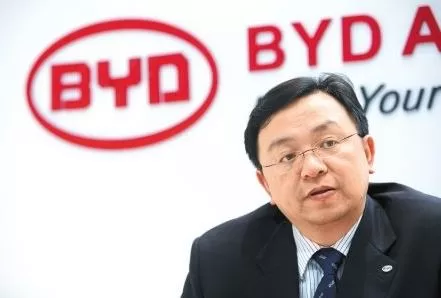
Effective BYD leadership is one of the main factors behind the phenomenal growth of the electric automaker. In April 2022, Wang Chuanfu, founder, Chairman and President of BYD, was listed on The 50 Most Influential Business Leaders in China 2022 by Fortune. Described as “a mix of Thomas Edison and Jack Welch, the former General Electric chief” by Charlie Munger in 2008[1], Wang Chuanfu is a charismatic and passionate leader known for his long-term vision and relentless work ethic. Transformational leadership principles prevail at BYD. Wang Chuanfu’s audacious vision for a sustainable future through EV and renewable energy motivates employees and stakeholders alike. He articulates a clear picture of BYD’s potential impact on the world, transcending mere financial goals. This inspires employees to see their work as contributing to a larger purpose. It is important to note that maintaining a transformational leadership style as the company scales can be challenging. Effective communication and delegation become crucial to keep everyone aligned with the vision and empowered to act. BYD Company Limited Report contains the above analysis of BYD leadership. The report illustrates the application of the major analytical strategic frameworks in business studies such as SWOT, PESTEL, Porter’s Five Forces, Value Chain analysis, Ansoff Matrix and McKinsey 7S Model on BYD. Moreover, the report contains analyses of BYD business strategy, organizational structure and organizational culture. The report also comprises discussions of BYD marketing strategy, ecosystem and addresses issues of corporate social responsibility. [1] White, E. & Campbell, P. (2024) “Wang Chuanfu, the driving force behind BYD’s rise” Financial Times, Available at: https://www.ft.com/content/22527628-733e-4188-9678-ab3210fdb1ba
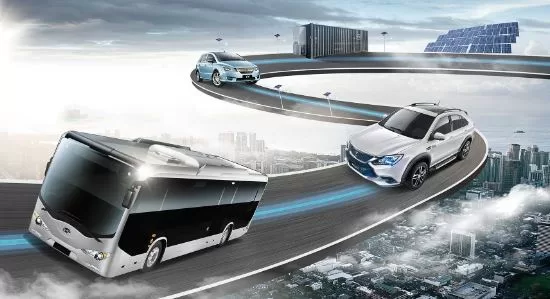
BYD business strategy consists of the following three pillars: 1. Cost leadership. Cost efficiency compared to its main competitor, Tesla is one of the key competitive advantages for BYD. Cost leadership has been a crucial component of BYD’s success, helping them establish themselves as a competitive contender in the EV market. BYD is able to maintain cost leadership business strategy in the global marketplace due to a number of factors such as lower cost of human resources in China, the extensive support by Chinese government to EV makers and an extensive vertical integration. Competitive pricing makes BYD’s EVs accessible to a wider range of consumers, particularly in cost-sensitive markets. This can drive market share gains and boost overall sales. Moreover, efficient cost management helps BYD maintain healthy profit margins even with lower prices, enhancing financial stability and fuelling further investments. 2. Extensive vertical integration. The electric automaker produces the majority of its spare parts in-house. For example, for BYD Dolphin only tyres and windows are delivered by suppliers and all other components are produced by the company itself. Vertical integration to such an extent allows the EV behemoth to maintain its cost leadership business strategy along with reducing the dependence on external vendors for spare parts. Moreover, controlling critical components minimizes dependence on external suppliers, mitigating risks of disruptions and shortages. Vertical integration also creates unique capabilities and intellectual property, setting BYD apart from competitors and bolstering brand differentiation. 3. Accelerated pace of new model development. While it takes about four years for an average automaker to develop a new car from scratch to design, for BYD it takes only 18 months. The electric automaker has adapted an accelerated pace of new model development to reflect changes in customer tastes and preferences as a cornerstone of its business…
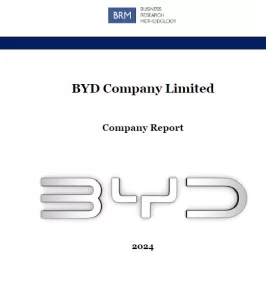
Founded in 1995, BYD Company Limited is a leading technology company that has established itself as an industry leader in electronics, automotives, renewable energy, and rail transit. As a global leader with more than 30 industrial parks across 6 continents, BYD’s zero-emission solutions, focused on energy generation and storage, are expansive and widely applicable. The electric automaker sold 26,864 million units of cars in 2022 , generating operating revenue of RMB 424,061 million, an increase of 96.20% compared to the previous year. The company delivered a record high of 1,788,000 new energy vehicles in 2022, representing a year-on-year growth over 217.6% . The electric vehicle (EV) giant pursues a business strategy of cost leadership fuelled with extensive vertical integration and an accelerated pace of new model development. BYD organizational structure integrates the elements of matrix structure, independent brands, emphasis on R&D and regional variations. Organizational culture of the EV behemoth, on the other hand, is associated with meritocracy, focus on cost-cutting and prioritizing company values. As one of the leading rechargeable battery manufacturers in the global arena BYD possesses certain strengths such as vertical integration and cost advantage, leadership in technological capabilities and economies of scale advantage from massive manufacturing. At the same time, the company has certain weaknesses. These include overdependence on domestic market, too broad range of businesses and dependence on subsidies by Chinese government to sustain cost advantage. BYD Company Limited Report contains the application of the major analytical strategic frameworks in business studies such as SWOT, PESTEL, Porter’s Five Forces, Value Chain analysis, Ansoff Matrix and McKinsey 7S Model on BYD. Moreover, the report contains analyses of BYD’s business strategy, leadership and organizational structure and ecosystem. The report also analysis marketing strategy, ecosystem and discusses the issues of corporate social responsibility. 1. Executive Summary 2. Business…

Nvidia Supporting Local Communities NVIDIA employees joined the company in contributing more than USD22 million and 16,500 volunteer hours to charitable causes in fiscal year 2022.[1] The company and its employees supported 5,700 nonprofits in 50+ countries around the world. Nearly 40% of employees participated in the Foundation’s Inspire 365 efforts during FY22, bringing the unique participation rate since the initiative’s start to 68%. Nvidia and Gender Equality and Minorities As of January 30, 2022, the company’s global workforce was 80% male, 19% female, and 1% not declared and 6% of workforce in the United States was composed of Black or African American and Hispanic or Latino employees.[2] The company scored 100% on the Human Rights Campaign’s Corporate Equality Index for a seventh consecutive year Energy Consumption by Nvidia By the end of the fiscal year ending January 31, 2025, the company plans to purchase or generate enough renewable energy to match 100% of its global electricity usage for its offices and data centres Waste Reduction and Recycling by Nvidia The company diverted 56% of FY22 waste from landfill, a 12 percentage point decrease from the previous year. Bulk carton packaging uses corrugate material that is 100% recycled fibres, and the cartons maintain an overall recyclability rate of 100% Consumer packaging uses 70% recycled fibres and maintains a recyclability rate above 75%. Overall recyclability rate for all packaging is 93% Nvidia other CSR Initiatives and Charitable Donations The company donated more than USD4.6 million to date for humanitarian relief to Ukraine and its refugees.[3] Nvidia Corporation Report contains a full analysis of Nvidia corporate social responsibility including Nvidia CSR issues. The report illustrates the application of the major analytical strategic frameworks in business studies such as SWOT, PESTEL, Porter’s Five Forces, Value Chain analysis, Ansoff…
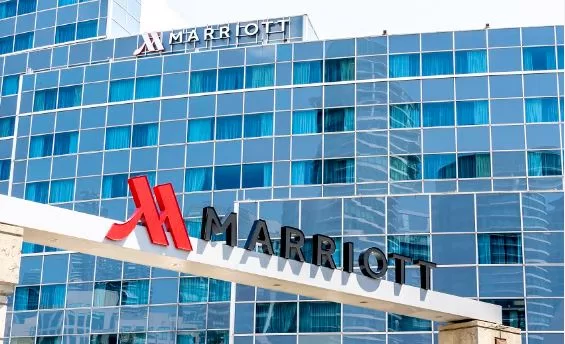
Marriott Supporting Local Communities In 2022 alone, employees contributed over 1.6 million volunteer hours across the globe, focusing on environmental and social issues to positively impact their communities. The company aims to locally source 50% of produce by year-end 2025 Marriott Educating and Empowering Workers In 2022, 78% of all associates* completed career- or skillsrelated training. The largest hotel chain in the world has been listed as Fortune 100 Best Companies to Work For® Great Place to Work® in 2022 Marriott and Gender Equality and Minorities A majority of Marriott’s Board are minorities or women Listed as one of 50 Best Companies for Latinas to Work for in the U.S., LATINA Style 2022 The company aims to increase representation of people of colour in U.S. executive positions to 25% by year-end 2025. 47% of Marriott’s global executives (vice president level and above) are women 22% of Marriott’s U.S. executives (vice president level and above) are people of colour Energy Consumption by Marriott In 2022, numerous Marriott-managed hotels across the globe implemented energy efficiency projects, saving approximately 45,000 MWhs of energy. 9% Global Reduction in Energy Consumption per Square Meter of Conditioned Space from 2016 Baseline 1% of electricity consumption sourced from renewable energy in 2022 Water Consumption by Marriott The company aims to reduce water consumption per occupied room by 15% from a 2016 baseline by year-end 2025 3% Global Reduction in Water Consumption per Occupied Room from 2016 Baseline Waste Reduction and Recycling by Marriott The hotel chain aims to reduce waste-to-landfill by 45% and food waste by 50% from a 2016 baseline by year-end 2025 In Thailand, 27 Marriott hotels donated over 33,000 kg (72,000 lbs.) of food and surplus food to Scholars of Sustenance (SOS) throughout 2022. Carbon Emissions by…
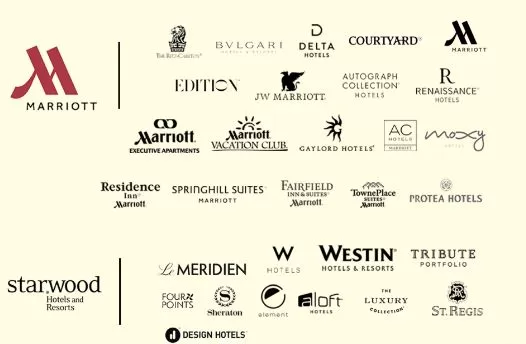
Key Components of Marriott ecosystem include the following: – Properties. Marriott has a portfolio of over 8,000 hotels in 138 countries and territories. This includes a variety of brands, from luxury to budget-friendly, to meet the needs of all types of travellers. – Loyalty programs. The hotel chain has three loyalty programs – Marriott Bonvoy, Ritz-Carlton Rewards, and Starwood Preferred Guest. These programs offer members exclusive benefits, such as free nights, room upgrades, and early check-in and check-out. – Technology platform. The largest hotel chain in the world has a robust technology platform that powers its website, mobile app, and loyalty programs. The company also uses technology to improve the guest experience, such as with contactless check-in and mobile keys. – Partners. The company has a wide range of partners, including airlines, car rental companies, and credit card companies. These partnerships allow Marriott to offer its guests a one-stop shop for their travel needs. Marriott’s ecosystem is designed to provide guests with a seamless and personalized experience. For example, when a guest books a hotel room on the Marriott website, they can also book a flight and a rental car. They can also use their Marriott Bonvoy points to pay for their hotel stay, flights, and car rental. Marriott’s loyalty programs also play an important role in its ecosystem. By rewarding guests for their loyalty, Marriott encourages them to stay at Marriott hotels and use Marriott partners. This helps Marriott to build long-term relationships with its guests. The Marriott International ecosystem benefits both Marriott and its guests. For Marriott, the ecosystem helps to increase revenue and improve customer loyalty. The hotel chain is able to generate additional revenue from its partners, such as airlines and car rental companies. The company is also able to improve customer loyalty by providing guests with a seamless and personalized experience. For guests, the ecosystem provides a number of benefits such as convenience, savings…
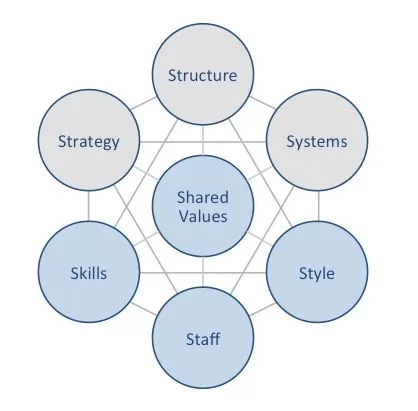
Marriott McKinsey 7S model illustrates the ways in which seven elements of businesses can be aligned to increase effectiveness for the largest hotel chain in the world. According to this framework strategy, structure and systems represent hard elements, whereas shared values, skills, style and staff are soft elements. McKinsey 7S model stresses the presence of strong links between elements in a way that a change in one element causes changes in others. As it is illustrated in figure below, shared values are positioned at the core of Marriott McKinsey 7S model, since shared values guide employee behaviour with implications on their performance. McKinsey 7S model Hard Elements in Marriott McKinsey 7S Model Strategy Marriott International’s business strategy is focused on providing high-quality hospitality services to a wide range of customers. The company has a portfolio of over 30 brands, ranging from budget-friendly to luxury, to appeal to different needs and budgets.[1] The hotel chain pursues asset-light business model and growth through acquisitions business strategy. Moreover, Marriott has been focusing on bleisure travellers as part of its business strategy. Structure Marriott International has a decentralized organizational structure, with each brand operating as its own business unit. This allows the company to tailor its offerings and services to the specific needs of each market. Marriott also has a strong focus on operational excellence, with a number of systems and processes in place to ensure that its hotels are run efficiently and effectively. Systems Marriott International has a number of systems in place to support its business operations, including a reservation system, a loyalty program, and a property management system. The company is also investing heavily in new technologies, such as mobile check-in and self-service kiosks. Marriott International Inc. Report contains a full analysis of Marriott McKinsey 7S Model.…
